Oral appliances, such as a mandibular advancement device
and tongue-retaining devices, work by mechanically enlarging
the upper airway by displacing the tongue forward and reducing its collapsibility during sleep,
41
mimicking the Jaw-
Thrust technique used by anesthesiologists to open the
airway in sedated patients. Both the mandibular advancement
device and tongue-retaining devices increase cross-sectional
area of the airway at the level of the velopharynx and
oropharynx, although the change in diameter is greater with
tongue-retaining devices than with the mandibular advance-
ment device.
42
Oral appliances are effective in reducing AHI in
patients with OSA
43
but are less ef
fi
cacious than PAP
therapy.
41,43
Baseline AHI
≥
30 and maximum therapeutic
CPAP pressure
>
12 mm Hg are predictive of oral appliance
treatment failure (success de
fi
ned by achieving either AHI
<
5,
or 5
≤
AHI
<
10 with
>
50% reduction from baseline), and thus
these clinical features should be considered when selecting
patients for oral appliance therapy.
44
Oral appliances are
recommended for treatment of primary snoring without OSA,
and in mild-to-moderate OSA in cases where the patient
strongly prefers to try an appliance over PAP therapy. They
are also preferable compared with no therapy for primary
snoring without OSA, or OSA of any severity in patients who
are intolerant to or unwilling to try PAP therapy.
- I have had the wonderful experience of working with Ryan at Cad-Ray for the last several weeks and he has been very professional and informative on how to properly use the Medit I700 scanner with regard to the software. I would highly recommend using... read moreI have had the wonderful experience of working with Ryan at Cad-Ray for the last several weeks and he has been very professional and informative on how to properly use the Medit I700 scanner with regard to the software. I would highly recommend using Cad-Ray and contacting Ryan for any of your Medit needs. read less - 1/27/2023
- Super happy with our purchase of the Medit i500 from Cad Ray. Overall its a work horse scanner that has handled anything weve thrown at it. The key to success with it is definitely taking the time to actually learn how to use it after purchase. Ca... read moreSuper happy with our purchase of the Medit i500 from Cad Ray. Overall its a work horse scanner that has handled anything weve thrown at it. The key to success with it is definitely taking the time to actually learn how to use it after purchase. Cad Ray has an immense library of straight forward education videos that are updated basically daily. I havent done the 2 day course but that is also included in the purchase. You really cant find that sort of service and education with any of the other scanners on the market. Id recommend them to anyone. read less - 6/26/2020
- I seriously can't believe the amount of support I get from Cad-Ray. I bought a medit scanner 2 months ago through Laura and she was very quick to get it shipped to me. She helped me through the whole process and ensured that I was passed to the right... read moreI seriously can't believe the amount of support I get from Cad-Ray. I bought a medit scanner 2 months ago through Laura and she was very quick to get it shipped to me. She helped me through the whole process and ensured that I was passed to the right people to train me. They were always available whenever I called, even one time I ran into an emergency after hours and Kaila picked up and saved the night. Very cool how they can remote access to my computer and guide me through as if they were right next to me.I also recently bought an Ackuretta Sol printer with Laura's help and she got me paired up with Jessica for my printer training. Jessica is so awesome! She is very knowledgeable and guided me through a lot of troubleshooting and set me up for success.Thank you guys so much!! I will always refer my friends to you all. read less - 4/13/2022
- I purchased my Medit from Cad-Ray just prior to Covid and they have been fantastic in getting me the proper training on the machine, both through there 2 day class as well as the many video's they post on the website. I recently purchased some acce... read moreI purchased my Medit from Cad-Ray just prior to Covid and they have been fantastic in getting me the proper training on the machine, both through there 2 day class as well as the many video's they post on the website. I recently purchased some accessories for a different office and they accidently sent it somewhere else. After a quick email they had my stuff at my door within 24 hrs and they threw in a box of tips which I was not expecting (around $300). It is a pleasure to deal with them! read less - 7/19/2021
- This is a unique place because it serves both dentists and patients. For patients, this is an imaging center only. There are no diagnostics done here. There is a dentist on staff, but he is only there for imaging purposes, no diagnosis. As a dentist,... read moreThis is a unique place because it serves both dentists and patients. For patients, this is an imaging center only. There are no diagnostics done here. There is a dentist on staff, but he is only there for imaging purposes, no diagnosis. As a dentist, I would say that to be fair a niche place like this couldn't be expected to bill insurances. They would have to hire an entire separate staff to deal with all the thousands of types of insurances you have. For dentists: This is a great service to your patients because if you do not own a 3d x ray machine, you don't have to invest the $200,000.00, you can refer your patients here and cad ray will send you the digital files. You can also send them files to have custom surgical guides made. The folks who work here go out of their way to explain how things work. If you don't have a doctor, they can refer you to a dentist who can diagnose your problems. I always call ahead to make an appointment. read less - 6/02/2018
- Got a great deal in the medit i700 and the training was top notch. I had about 3 one hour sessions with Ryan at cadray and he was clear, concise and knowledgeable in both the software and hardware components of the computer/scanner and the detailed a... read moreGot a great deal in the medit i700 and the training was top notch. I had about 3 one hour sessions with Ryan at cadray and he was clear, concise and knowledgeable in both the software and hardware components of the computer/scanner and the detailed aspects of the dentistry itself. Got a direct line going forward and would recommend cad ray to anyone read less - 8/17/2022
- Medit i500 is an incredible scanner. I have experience with other types of scanners including IO and Desktop but this one is really impressive. It is blazing fast and takes beautiful scans. But more importantly is the company itself. Medit is an amaz... read moreMedit i500 is an incredible scanner. I have experience with other types of scanners including IO and Desktop but this one is really impressive. It is blazing fast and takes beautiful scans. But more importantly is the company itself. Medit is an amazing company and is constantly trying to improve. They are always on the cutting edge and releasing new improvements all the time. They are always LISTENING to the customers on how to improve the scanning experience and change accordingly. The customer service is second to none. I highly recommend this scanner but even more highly recommend considering buying the scanner as a result of the great company and PEOPLE that stand behind it. read less - 10/09/2019
 Medit i500 Intra-Oral Scanner
Medit i500 Intra-Oral Scanner - CAD-RAY has the best customer service. They go above and beyond to make sure you have a good experience with your medit scanner. With most tech companies, the person that answers the phone has to put you on hold for who knows how long before getting ... read moreCAD-RAY has the best customer service. They go above and beyond to make sure you have a good experience with your medit scanner. With most tech companies, the person that answers the phone has to put you on hold for who knows how long before getting you in touch with someone to fix the issue. With CAD-RAY, I called and Heather answered the phone. Heather was able to remotely fix my issue within 30 minutes and have me back up and running. No holds, no waiting!!! I highly recommend. read less - 9/01/2022
- We started our journey with CAD-Ray 3 years ago them helping us find a digital scanner that fits our practice needs and have relied on them for our 3D printing needs. They are an excellent company and I highly recommend them for their knowledge and s... read moreWe started our journey with CAD-Ray 3 years ago them helping us find a digital scanner that fits our practice needs and have relied on them for our 3D printing needs. They are an excellent company and I highly recommend them for their knowledge and service they provide. I would buy and dental tech needs from them! read less - 9/07/2022
- I have strong feelings about how great CAD-Ray has been. I purchased a medit i500 scanner from my lap, they wanted to use it for courses which aren't happening now so he didn't want to be sitting with this expensive piece of technology sitting aroun... read moreI have strong feelings about how great CAD-Ray has been. I purchased a medit i500 scanner from my lap, they wanted to use it for courses which aren't happening now so he didn't want to be sitting with this expensive piece of technology sitting around. Before purchasing he and I both talked to the Nobel sales rep who assured me that everything would transfer over just fine. I was concerned about the learning curve and wanted to be sure that I would have tech support. I asked the rep directly and he assured me again that everything would be great and he would come do an in-depth training with me. Long story short, the sales rep had no clue what he was doing and put very little effort in to helping me once the purchase was complete. I asked him over the phone how to do a few things and his response was to call CAD-Ray. They explained that this happens, they would love to help me but asked that I purchase the service package. That was a game changer. Now all of my questions getting answered, their response time is amazing and their understanding of the machine is by far better then the Nobel reps. The scanner is great but combine that with their tech support and I feel like I'm set up for success. If I were to do this again, I would skip the headache of trying to save a little bit of money and purchase it through CAD-Ray. But even with making the mistake, I feel like they have programs and support set up to point me in the right direction. read less - 10/15/2020
- After weeks of research I purchased the i700 through Nick at cad-ray. My office has never used a scanner before and despite the great pricing, this was still a major purchase for me. Nick was incredibly helpful guiding me through the process while an... read moreAfter weeks of research I purchased the i700 through Nick at cad-ray. My office has never used a scanner before and despite the great pricing, this was still a major purchase for me. Nick was incredibly helpful guiding me through the process while answering my many questions. The customer service was very responsive and my friends who have purchased medit scanner were correct that this is the way to go. 5 Stars! read less - 5/08/2021
- I was on the fence on getting a scanner for years and finally pulled the trigger. CAD-Ray's support and knowledge has made this one of the best investments in my practice to date. When I spoke with Damien on the phone about my options he literally sa... read moreI was on the fence on getting a scanner for years and finally pulled the trigger. CAD-Ray's support and knowledge has made this one of the best investments in my practice to date. When I spoke with Damien on the phone about my options he literally saved me thousands after figuring out what my exact needs were. I went with the Medit i600, MSI laptop and 3D dental systems cart. The final product looks and feels as premium as it gets. read less - 2/21/2024
- Going with CAD-RAY and Laura is one of best investment I've made year 2020 ( I have MEDIT 500). Jumping into scanning is something that intimidated me since I am not a techie person and taking PVS impression is something second nature to me. Laur... read moreGoing with CAD-RAY and Laura is one of best investment I've made year 2020 ( I have MEDIT 500). Jumping into scanning is something that intimidated me since I am not a techie person and taking PVS impression is something second nature to me. Laura made everything a breeze, she is very accomodating and most importantly responds so fast, I never felt left out. Attending the level 1 course of Armen M. was awesome , learned the basics and it was taught in a way so easy to apply. Since my first scan, I never looked back, thinking to myself , I should have done this earlier. The crowns comes back with little to no adjustements which saves a lot of chair time. Cannot get better than this. Big shout out to CAD-RAY, Laura and Armen read less - 10/19/2021
 Medit i500 Intra-Oral Scanner
Medit i500 Intra-Oral Scanner - I was dragging my feet before purchasing my first scanner because I was apprehensive of the effort required to change to a digital workflow. Laura assured me my fears were overblown and because of her patience and exceptional training abilities it h... read moreI was dragging my feet before purchasing my first scanner because I was apprehensive of the effort required to change to a digital workflow. Laura assured me my fears were overblown and because of her patience and exceptional training abilities it has been a rewarding and relatively seamless transition to the world of scanning. I never dreamed implementation would have been this easy and its attributed to Laura's skillful training ability. The scanner is wonderful and powerful, but we would have never been able to unlock its potential without her assistance. read less - 8/31/2021
 Medit i700
Medit i700 - Perfectly Placed Implant course in San Diego was very good. Armen and Brian are excellent lecturers and educators. A lot of practical tips and pearls of wisdom for those getting into cone beam and guided surgery. Would recommend this course highly. ... read morePerfectly Placed Implant course in San Diego was very good. Armen and Brian are excellent lecturers and educators. A lot of practical tips and pearls of wisdom for those getting into cone beam and guided surgery. Would recommend this course highly. Looking forward to other courses that they offer read less - 2/18/2017
 When I decided to purchase a digital scanner I decided on user experience. They have provided the best experience I could have asked for, from online support, Facebook support, and in person courses. There is no better team to buy Medit from period... read moreWhen I decided to purchase a digital scanner I decided on user experience. They have provided the best experience I could have asked for, from online support, Facebook support, and in person courses. There is no better team to buy Medit from period. Do yourself a favor and buy from them if you are in the market for an intraoral scanner. read less - 6/16/2020
When I decided to purchase a digital scanner I decided on user experience. They have provided the best experience I could have asked for, from online support, Facebook support, and in person courses. There is no better team to buy Medit from period... read moreWhen I decided to purchase a digital scanner I decided on user experience. They have provided the best experience I could have asked for, from online support, Facebook support, and in person courses. There is no better team to buy Medit from period. Do yourself a favor and buy from them if you are in the market for an intraoral scanner. read less - 6/16/2020
- 5 stars for a great product and great service. After much research I knew I was set on the Medit 500. I considered some of my local equipment reps, as well as cad-ray. Cad-ray won out due to their efficiency, speed of service, and knowledge. Their on... read more5 stars for a great product and great service. After much research I knew I was set on the Medit 500. I considered some of my local equipment reps, as well as cad-ray. Cad-ray won out due to their efficiency, speed of service, and knowledge. Their online presence makes it easy to get help via messaging, social media, or phone. The fact that one of the employees of Medit (an engineer?) posts on the cad-Ray Facebook group speaks volumes of the vendor-mfg relations.
The scanner itself works great, but make sure to contact them to get the minimum specs required for a laptop — it will make a difference in how the scanner performs. I had some slow scans at first but upgraded from 8gb to 32gb ram and also got some coaching from customer service (Frank) to get me up to speed.
To make the scanner mobile, I purchased this cart from Staples: https://www.staples.com/Oklahoma-Sound-Premium-Audio-Visual-Presentation-Cart-40-1-2-H-x-18-W-x-30-D-Black-Ivory-Wood/product_932437.
Lastly, I purchased “3M Dual Lock Fastener” to keep the power module attached to the wand from falling off the cart. I carry the scanner between two offices, so I wanted something sturdy, but removable. (see in photos). The hockey puck shaped holder (comes with the scanner) is heavy and sticks to the countertop without needing any adhesive. read less - 10/12/2019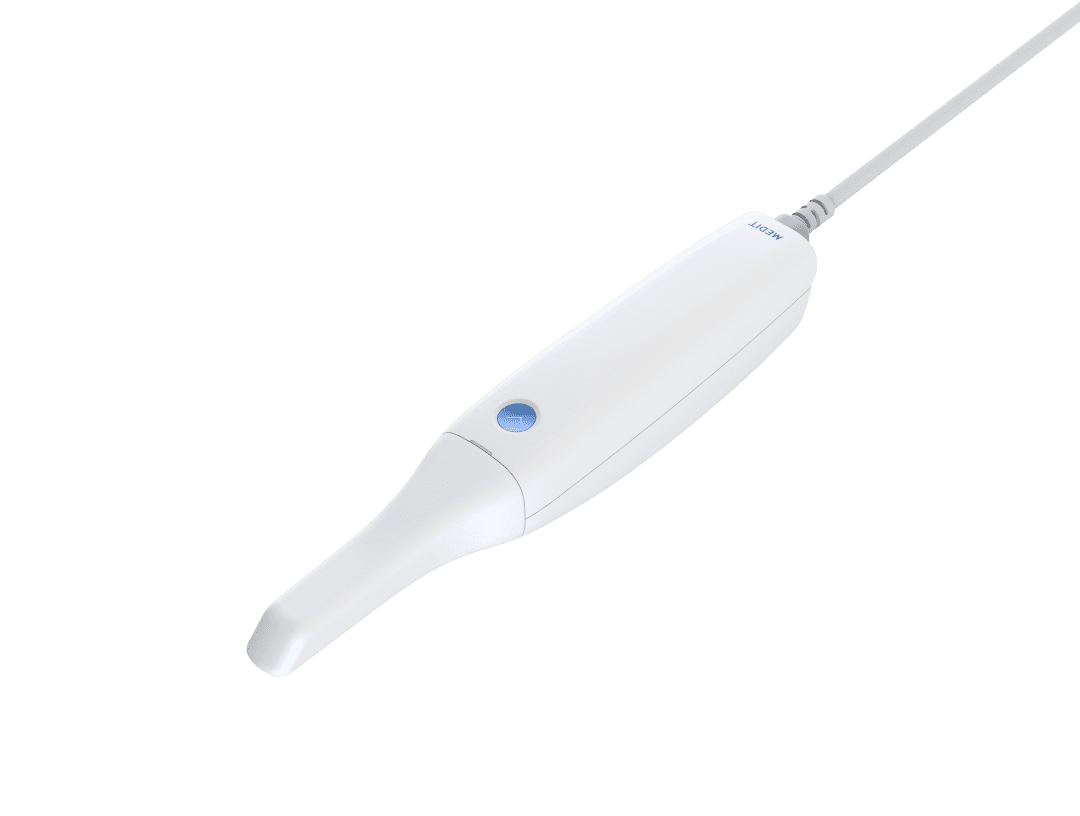 Medit i500 Intra-Oral Scanner for the D.I.Y. Dentist - Get this scanner for $16,000 after our rebate!
Medit i500 Intra-Oral Scanner for the D.I.Y. Dentist - Get this scanner for $16,000 after our rebate! - The customer service we have received while working with Frank DeLuca is second to none! He is incredibly knowledgeable and enthusiastic, as well as always available to help with any issues. We are very pleased with CAD-RAY and relationship that they... read moreThe customer service we have received while working with Frank DeLuca is second to none! He is incredibly knowledgeable and enthusiastic, as well as always available to help with any issues. We are very pleased with CAD-RAY and relationship that they have with their clients. read less - 1/25/2023
- Last year when I started looking into the Medit i500 I had my front desk call 3 sellers to get preliminary information. She told me hands down call CAD-RAY and don’t bother with the others. Boy was she right! Frank got us going with all our hardware ... read moreLast year when I started looking into the Medit i500 I had my front desk call 3 sellers to get preliminary information. She told me hands down call CAD-RAY and don’t bother with the others. Boy was she right! Frank got us going with all our hardware needs and trained us until all our questions were answered. Then Jonathon and Armen jumped in at our 2 day live training in Baltimore. I still review my notes to implement all the great ideas. When I get myself in a jam time to time CAD-RAY responds immediately and fixes my problem. Best decision I have made in the practice in a long time - Thank you everyone at CAD-RAY! read less - 10/09/2019
 Medit i500 Intra-Oral Scanner
Medit i500 Intra-Oral Scanner  Fantastic support and customer service! This is an awesome company. They aren't big box and actually know how to use, trouble shoot and ball out with the products they sell. They only will sell and endorse a good product. They are selective. Whatever... read moreFantastic support and customer service! This is an awesome company. They aren't big box and actually know how to use, trouble shoot and ball out with the products they sell. They only will sell and endorse a good product. They are selective. Whatever they sell they back. And they have your back too. Their support, service and training is industry leading. Also Laura from CadRay is a beast. She's wizard read less - 4/23/2022
Fantastic support and customer service! This is an awesome company. They aren't big box and actually know how to use, trouble shoot and ball out with the products they sell. They only will sell and endorse a good product. They are selective. Whatever... read moreFantastic support and customer service! This is an awesome company. They aren't big box and actually know how to use, trouble shoot and ball out with the products they sell. They only will sell and endorse a good product. They are selective. Whatever they sell they back. And they have your back too. Their support, service and training is industry leading. Also Laura from CadRay is a beast. She's wizard read less - 4/23/2022
- I purchased the Medit i700 from CAD-Ray back in May and the purchasing process, setting-up and trouble shooting has been extremely easy and straight forward with CAD-Ray. The Medit i700 is one of the best, if not the best, scanner I have used in the ... read moreI purchased the Medit i700 from CAD-Ray back in May and the purchasing process, setting-up and trouble shooting has been extremely easy and straight forward with CAD-Ray. The Medit i700 is one of the best, if not the best, scanner I have used in the past 5 years of using intraoral scanners. Recently I ran into a software issues with my scanner and I am extremely impressed with CAD-Ray and Medit's timely manner in addressing my issue. Within minutes I was on the phone with them and they had my concerns addressed and solved. I previously recommended a few colleagues to CAD-Ray and I will continue to recommend with even greater enthusiasm. I am very pleased with their customer service and the Medit i700. Thank you CAD-Ray! read less - 9/30/2021
 Medit i700
Medit i700 - I have had the original iTero, a Trios 3, and a Carestream CS3600. A staff member broke the lens on the Trios and while waiting 3 weeks for an RMA to send it to Poland for six weeks to get it repaired, Carestream was sniffing around and suggested tha... read moreI have had the original iTero, a Trios 3, and a Carestream CS3600. A staff member broke the lens on the Trios and while waiting 3 weeks for an RMA to send it to Poland for six weeks to get it repaired, Carestream was sniffing around and suggested that I trade in my Trios so I did which began a 4 month nightmare with their piece of junk scanner. Absolutely awful customer service from both 3Shape and Carestream. I needed a scanner and had heard great things about it the Medit i500 at the Florida Academy of Coesmetic Dentistry so I got one. It works really well and Medit keeps adding new and useful features and their architecture is completely open. Two weeks ago, my i500 died so I contacted Cad-Ray surrport and I had a new unit in my office 24 hours later! That's absolutely unheard of in the industry!!! Both Cad-Ray and Medit have positioned themselves to be industry giant killers and they're doing it. The i500 is a phenomenal scanner at a phenomenal price point and service and guidance at Cad-Ray is just plain excellent.If you are thinking about getting a scanner, do it! Just contact Cad-Ray and go for it. You will only be happy about your purchase! Highly recommended! read less - 3/09/2021
- One of the best investments I’ve made for my office. A fraction of the cost compared to cerec. No monthly club fee. Easy maintenance. Saving a ton on lab costs. Milling and designing crowns is honestly my favorite things to do now. - 6/29/2020
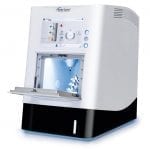 IMES ICORE CORiTEC ONE
IMES ICORE CORiTEC ONE - STOP SEARCHING NOW!
Best bang for your buck scanner on the market. we have been using out medit for 8 months now. love our crowns, margins are fantastic. almost no adjustments needed at all. maybe one in ten crowns might have to adjust mesial or... read moreSTOP SEARCHING NOW!
Best bang for your buck scanner on the market. we have been using out medit for 8 months now. love our crowns, margins are fantastic. almost no adjustments needed at all. maybe one in ten crowns might have to adjust mesial or distal to get crown to drop in. occlusion is always spot on. patients love the technology and WOW factor -"SOOO COOOLLL." customer service is great also! dont waste your money on anythign else. our lab even comments on how easy it is to deal with medit and how good the scans are. they recommend it to their other doctors now as well. read less - 10/09/2019 Medit i500 Intra-Oral Scanner
Medit i500 Intra-Oral Scanner - My Intraoral scanner was not working. It wouldn’t scan, during the scan the screen was completely blue. I contacted Laura and she logged in remotely and took care of the problem. She was extremely helpful and knowledgeable. Thank you Laura for your o... read moreMy Intraoral scanner was not working. It wouldn’t scan, during the scan the screen was completely blue. I contacted Laura and she logged in remotely and took care of the problem. She was extremely helpful and knowledgeable. Thank you Laura for your outstanding service. Thank you. read less - 12/07/2021
- I had been on the market for a scanner for a while and the i700 is my first intraoral scanner purchase. We are still new to the scanning world and its capabilities. Frank DeLuca was my main contact from the beginning and the person who did our traini... read moreI had been on the market for a scanner for a while and the i700 is my first intraoral scanner purchase. We are still new to the scanning world and its capabilities. Frank DeLuca was my main contact from the beginning and the person who did our training. The scanner is incredible and has surpassed our expectations even though we haven’t used it to its full potential yet. Frank has been amazing and always there to guide us every step of the way. Having such fabulous customer service and support from CAD-Ray was key for us when making this purchase decision. Thank you! read less - 6/23/2022
- This scanner is amazing! It’s hard to believe that it is less then half the price of 3 shape with zero yearly charges. I highly recommend you give it a try! - 10/09/2019
 Medit i500 Intra-Oral Scanner
Medit i500 Intra-Oral Scanner - I'm a repeat customer because Cad-Ray's customer service is fast, efficient, and no nonsense. The classes offered for training for particularly for the Medit is awesome and it comes included which is phenomenal. All the classes that I've gotten to at... read moreI'm a repeat customer because Cad-Ray's customer service is fast, efficient, and no nonsense. The classes offered for training for particularly for the Medit is awesome and it comes included which is phenomenal. All the classes that I've gotten to attend so far has been well organized and I left learning very practical things. Remote support team solves my problem right then and there. Recently I had an issue, and instead of me talking to a sales rep who doesn't know what to do, Kaila remoted in and got it fixed just like that. Thank you and great job guys! read less - 4/19/2022
- Purchasing my medit i700 from Cad-Ray was a great decision. I did my first training with Kaila and she was fantastic! Super knowledgeable, patient and truly helpful in making sure I was ready to hit the ground running with patient care. I put a call ... read morePurchasing my medit i700 from Cad-Ray was a great decision. I did my first training with Kaila and she was fantastic! Super knowledgeable, patient and truly helpful in making sure I was ready to hit the ground running with patient care. I put a call into cad-ray support in the middle of a case and sure enough Kaila was also the one to answer and handle the situation. She jumped right on my computer and had things fixed in a matter of a few minutes. Awesome support, great staff and overall super positive experience with Cad-ray thus far! read less - 5/06/2022
- I am beyond impressed with Destaney and Cad-Ray! Despite accidentally throwing away my old scanner, which I was supposed to return, their team went above and beyond to advocate for me. Their exceptional support and understanding turned a stressful si... read moreI am beyond impressed with Destaney and Cad-Ray! Despite accidentally throwing away my old scanner, which I was supposed to return, their team went above and beyond to advocate for me. Their exceptional support and understanding turned a stressful situation into a seamless experience. Highly recommend! read less - 8/02/2024
- Dentist here. Bought a scanner, mill and 3d printer with Cad-Ray. I don't know what I'd do if I bought these items without their support. They've helped me so much and are awesome. I felt I had to repay by writing them this nice review. You won't reg... read moreDentist here. Bought a scanner, mill and 3d printer with Cad-Ray. I don't know what I'd do if I bought these items without their support. They've helped me so much and are awesome. I felt I had to repay by writing them this nice review. You won't regret getting whatever you need through Cad Ray. read less - 3/15/2024
- Andy was wonderful with setting everything up and explaining everything. The Medit i700 has been great thus far, easy set up! The only "issue" is that it can be occasionally glitchy. - 1/11/2022
 Medit i700
Medit i700 - Been using my i700 for a month now and it's been great. The tutorials that Cad-ray provides have been very helpful. This scanner with a fast computer turns out great results. - 11/01/2021
 Medit i700
Medit i700 - Pretty much echoing what everyone else has said. Frank DeLuca and the whole team at CAD-RAY are fantastic. The best customer service and support in dentistry, hands down, not even a close second. We are thrilled with our Medit scanner and will certai... read morePretty much echoing what everyone else has said. Frank DeLuca and the whole team at CAD-RAY are fantastic. The best customer service and support in dentistry, hands down, not even a close second. We are thrilled with our Medit scanner and will certainly be choosing CAD-RAY for any future purchases. read less - 12/30/2021
Home » Apnea » Sleep Apnea, Heart Disease, and Oral Appliances in the Journal of the American Heart Association Journal » oral appliances and apnea and cardiac disease



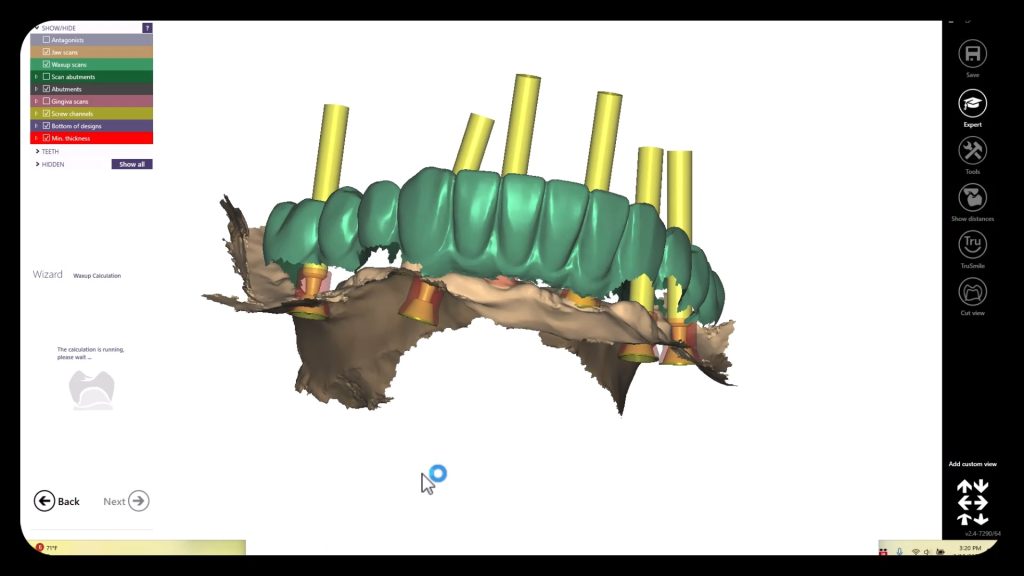
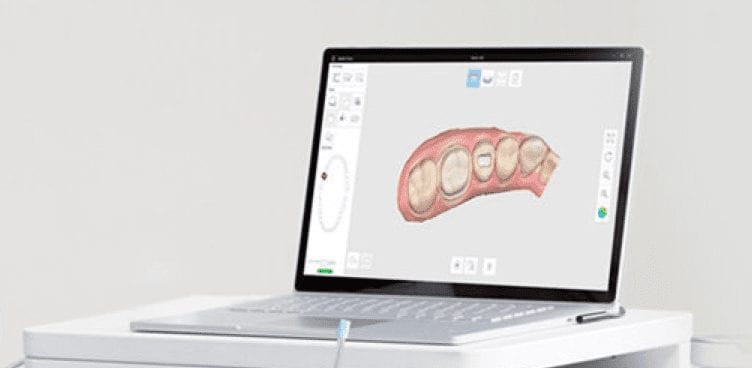
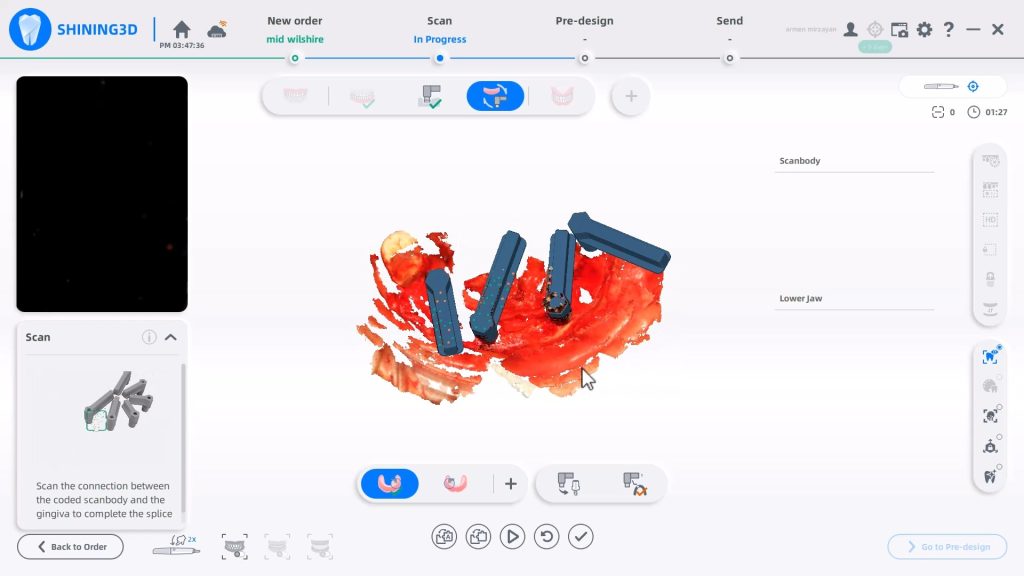
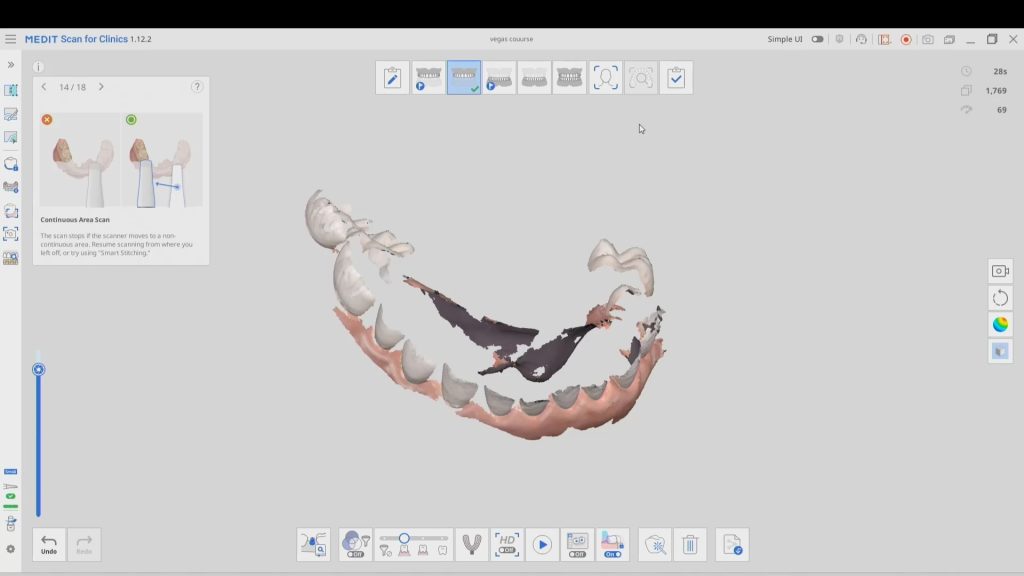
You must log in to post a comment.